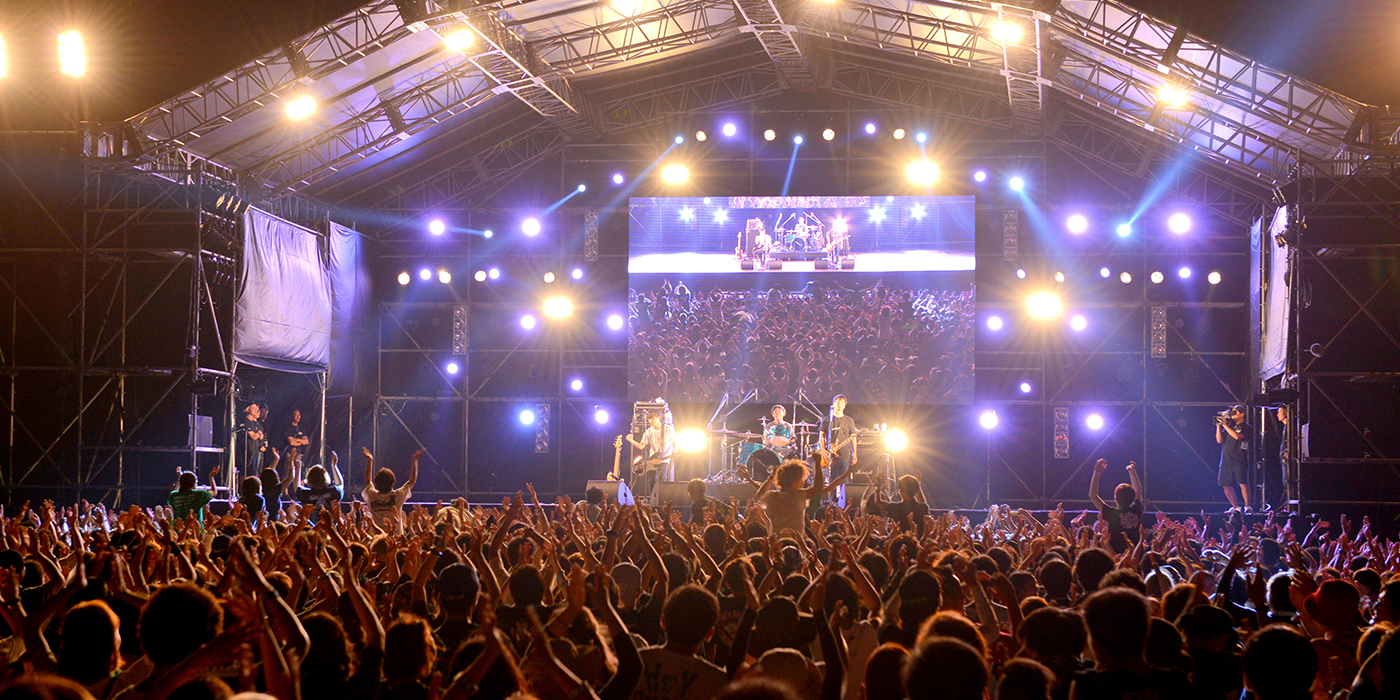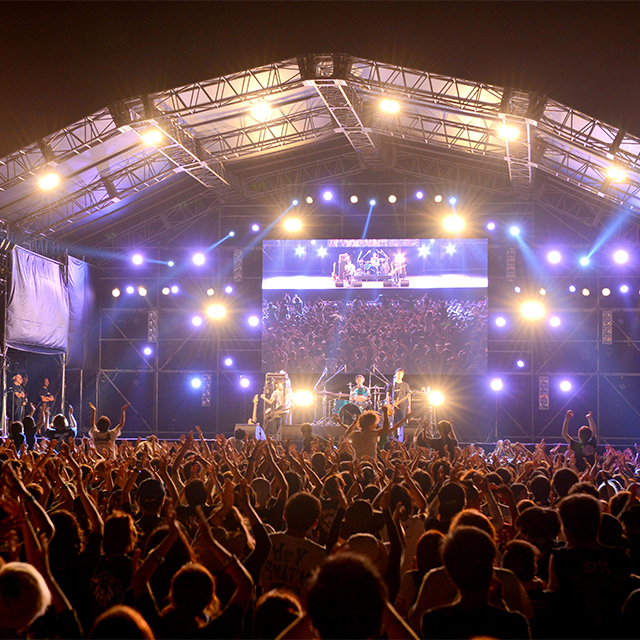Nagasaki-based three piece rock band Shank boasts a career spanning 15 years, the talented performers playing over 100 shows each year throughout Japan. While the band may enjoy a high level of prestige among their fellow rock musicians, their management—including their label—is handled entirely in-house at Avex, and is one artist engaging in 360-degree development. The team behind Shank purposefully includes as few members as possible. The breakdown between artist, management, and label affairs with a small allows for better communication and more effective sharing of information, making the operation both more open and allowing for more timely support, the perfect fit when it comes to how a live band works. All members of the team work together in terms of sales, actual gigging, merchandizing, and event operations, helping to increase the scope of Shank’s brand image without damaging it.
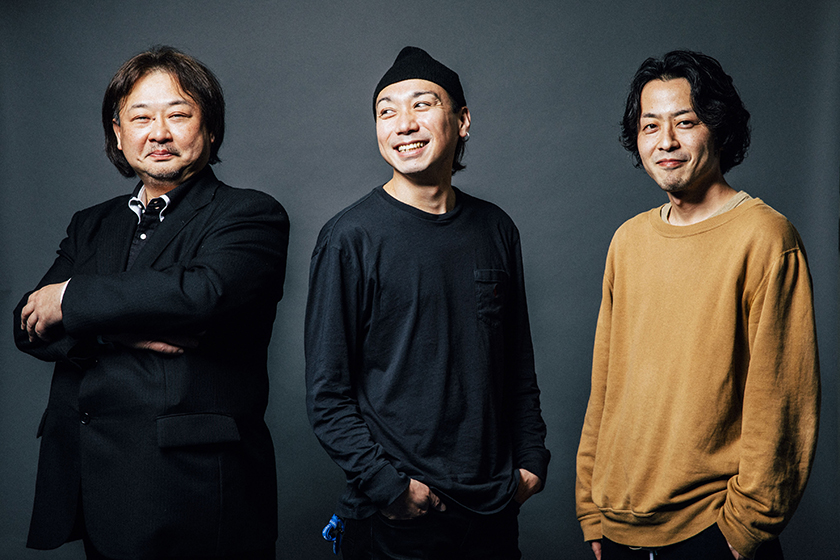
Increasing Shank’s Scope
With A Business
Model Based In
Indie Label-Thinking
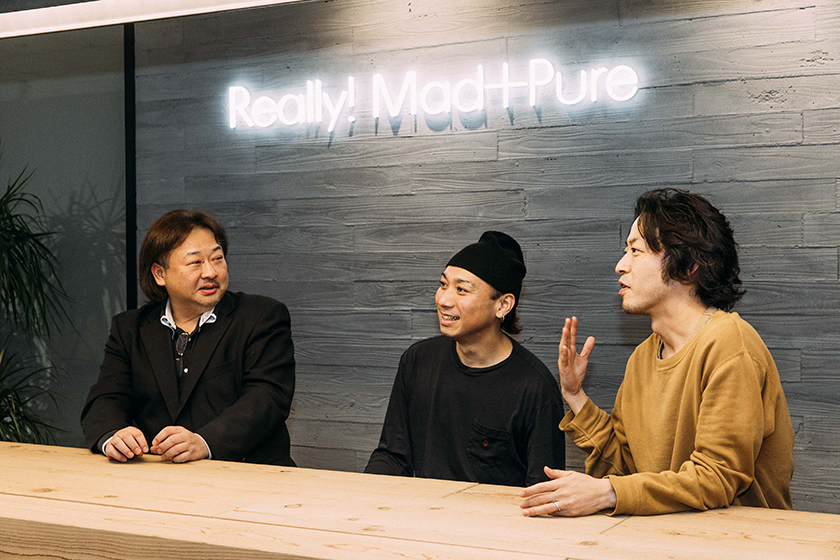
One thinks about working with a live band, what springs to mind is the difficulty getting the members of the band to agree with you. Generally speaking there are plenty of bands that manage themselves without the help of outside parties or companies. The man in charge of Shank’s A&R and management, Yoshiaki Fukazawa, looks back on the difficulties he faced bringing Avex and the band together and when their relationship was just in its budding stages.
Fukazawa: “Actually, I had been an acquaintance of Shank back when they were still an indie band. I’d say to them, ‘I’d like to do something fun with you guys.’ So one day the band got to the point where they were thinking about how they wanted to move forward. I asked them, ‘Why don’t you switch over to us?’ and that got the ball rolling. They said, ‘If we can keep the things we want to keep about our band the same, like how we approach shows, the way we work now, and do that in a good environment, then we’d consider it.’ And with that request, we started the process of bringing them over to Avex.”
Kazuma Okano, the man in charge of publicity for Shank, goes on to talk about the agreement with the band was one that placed much more significance on the connections between people, their relationships, more so than financial value or merit, an agreement that would see the band and their managers working very closely with the band, an agreement characteristic of the scene they hail from.
Okano: “What we had to do with Shank was to both increase their scope as a band while maintaining their brand image at the same time. Every year the band continues to steadily gain more and more fans, and I think that’s because the members themselves have worked hard to maintain their own brand the whole time they’ve been together. I mean, our company is better known for acts that lean towards the more performative side of the spectrum, and Shank’s attitude is the complete opposite of what you get with those kinds of acts. If that’s the case, then the merit of the band working with us would be to recognize and bring out the inherent value in the band that they themselves didn’t tap into during their indie period, then look for a market that value would likely speak to, and to promote them within that market. In the very center of all this is ‘What does the band itself want to be?’ and ‘What does the band want to do?’ So once the team behind the band all understand this, they can use that to spread their name and get them their next big break. It seemed to me like they weren’t really capable of doing that to a satisfactory level on their own up to that point, which gave me the sense that this band has a lot of potential.”

By contributing to those facets of the band, Shank has continued to see steady increases in attendance year-after-year.
Fukazawa: “They are very conscious of how their audience sees them, how they come off, the impression they leave. Even when it comes to T.V., it’s not as if they don’t want to be on T.V., but it isn’t that high on their list of priorities. Basically, the band all deliberate together how they can present their best aspects to the world and go from there. I guess you could say that they’ve built that foundation up over the years they’ve been together.
As mentioned before, the team behind Shank is a small one. Excluding the band members themselves, their team is made up of three people. Simply put, the team includes Fukazawa who handles the artists and the content they put out (releases, live shows, merchandizing); their on-site manager Kiyota(not participated in this interview); and the man who handles their outward facing persona (advertisement promotion, etc.), Okano.
Fukazawa: “I think one advantage is the direct connection between label and management. Before they came over to Avex, these two facets were handled by different companies, and once they moved over to us, any separation between the two disappeared, allowing them to move forward under the same framework. That allows for an approach where it’s not about hitting points and checking boxes, but rather lines, routes; from one-dimensional to two-dimensional thinking. That’s because you don’t have to think about their next release and future shows separately; you can start planning things with the whole picture in mind and create an all-inclusive schedule. It’s for reasons like those that our approach to the band is the same as that of an indie label: a small team, working together, to get from point A to point B, and it’s the fact that we’re taking that kind of an approach at such a big company that makes the whole thing so interesting.”
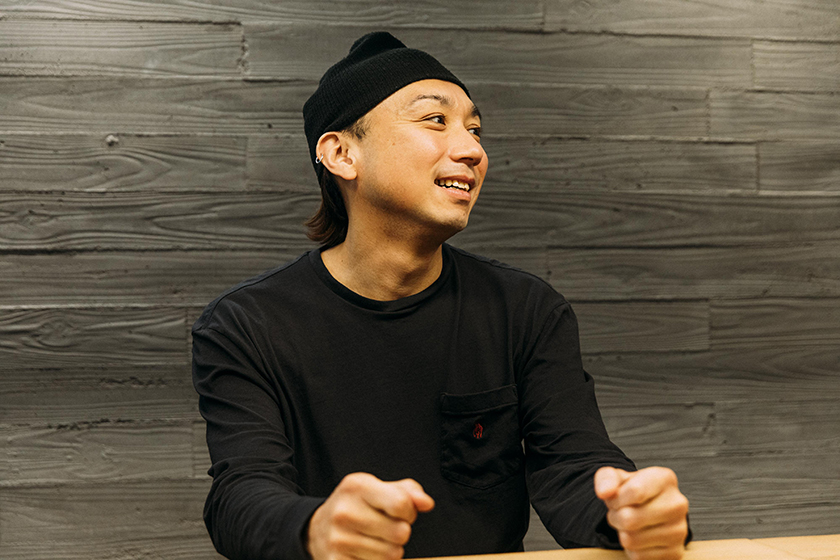
Okano: “But that also means that everyone has to be really on top of their game (laughs). But even so, what’s good about our small team is that our method makes it difficult for the goal we’re working towards to fall out of focus. I have experience with this myself. No matter what your role is on the team, the shared goal is to “make our artist popular,” then before you realize it, you find yourself working toward simply fulfilling your specific duty on the team. For instance, you might think, “I’m in charge of publicity, so naturally I’ve got to publicize the band!” So you do that, but afterwards when you’re going over the outcome, you realize that, “What I did might actually have lowered the band’s value in the end. It would’ve been better to focus on something else while I was doing that instead.” Things like that.”
Okano (con’t): “But I also work with bigger teams as well, and comparing the two together, I get the feeling that that this tendency is more pronounced with larger teams. Still, at the same time if everything goes well, bigger teams can often produce bigger results, so it’s not like you can say one is better than the other.”
Towards Becoming The Primier Music
Festival In Nagasaki:
Built From A D.I.Y. Foundation
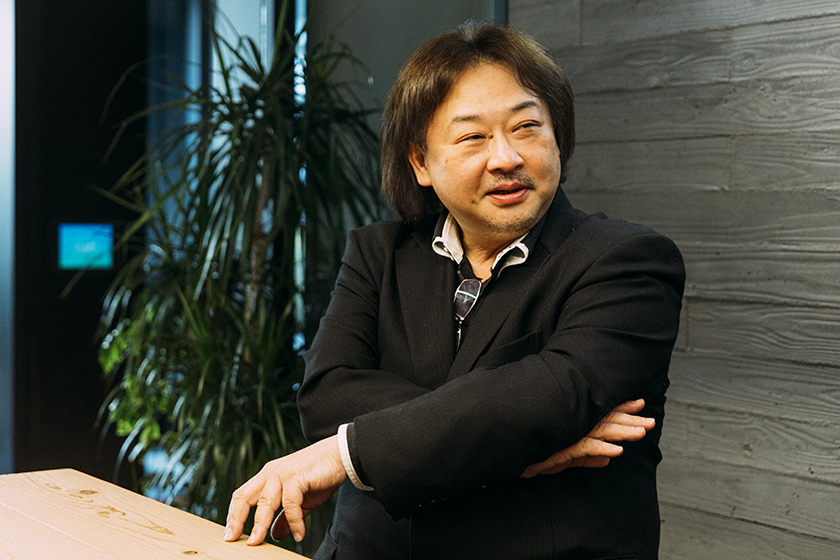
Later this year on June 8, Shank will hold their yearly event Blaze Up Nagasaki in the titular town where the band hails from. The event, planned and curated by the band itself, will, continuing from last year’s show, be held at the Huis Ten Bosch theme park—one that gathers life-sized recreations of Dutch buildings.
Blaze Up Nagasaki 2019 in Huis Ten Bosch is aiming to accomplish two things: to function as an artist-sponsored festival and to help revitalize their hometown. A great deal of effort has been put into the show to make it Nagasaki’s premier music festival. The band started the event back in 2011 at a local live music venue, later moving it to a stage specially constructed for the show in Kaminoshima Park in Nagasaki City, doubling the event’s capacity up to 1,500 people. In recent years, even this space started to get cramped, leading to another change of venue last year when it was moved to Huis Ten Bosch.
Fukazawa: “It was a show they were hosting on their own, but they’d take a break from doing it and wanted to start it back up. So while we were looking for places, they found this park in their hometown, and they brought it to me, saying that they could probably do a gig at the park. The park is in a town called Kaminoshima. Basically, we worked alongside the band and the local residents’ association, taking care of all the important little matters, turning in applications at city hall, stuff like that, helping them bring the show to fruition. As a matter of fact, the park is just your average run-of-the-mill park, and it’s on top of a hill. So every time we put a show on there, it was all D.I.Y. When festival time would roll around we’d get out there and start by weeding. Of course the band members were helping as well as people from the residents’ association, young local musicians, and other volunteers, too. All of the old folks from the residents’ association have known the boys in Shank since they were little, and they were so happy about how much their band had grown that they would help us out in all sorts of ways, never asking for anything in return. They did things like handle parking, guide people to the event. That’s the kind of scale we’re talking about, so when it came to gathering cosponsors, Okano and the others would just cold-call places downtown and other local businesses like crazy. It truly was a D.I.Y. festival. It was a rock fest with the kind of charm and atmosphere you find with a local festival or carnival put on by the neighborhood residents’ association.”
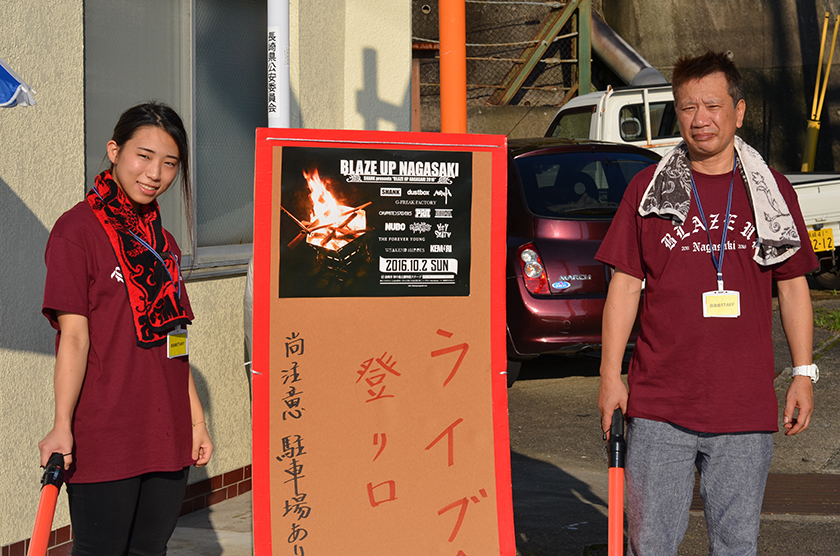
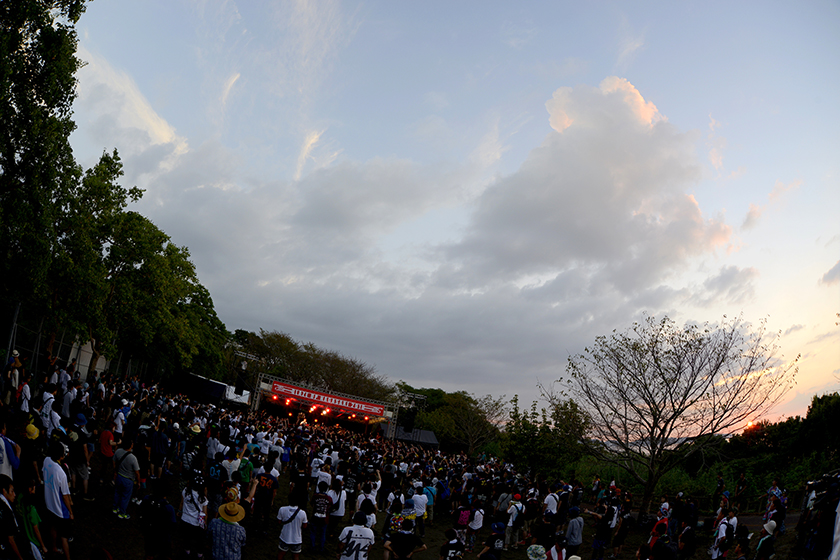
BLAZE UP NAGASAKI 2016 (photo: Yasumasa Handa [showcase])
But the event seemed to get more and more cramped at Kaminoshima Park, so in 2017 the team started looking for a new venue. What they landed on amongst all the candidates was Nagasaki Huis Ten Bosch, the one who really shaped the idea being Kimihiko Yoshino, newly transferred over to Fukazawa’s department at Avex. Yoshino handled outside matters, things like getting locations that had synergy with the band, and coming up with other plans and ideas.
Yoshino: “Shank had been asked to play an event that I was working on. They remembered me from when they played, and when they got in touch with me through Fukazawa about putting this on, I got to work. I’d already been dealing with the people in charge of the theater at Haus Ten Bausch regularly, and we’d also booked other Avex artists there in the past.”
At that point, Yoshino thought: Nagasaki, hence this location.
Yoshino: “The show was going to be held on the island of Kyushu, so we first looked at where would be the easiest place in terms of access for those in the Nagasaki area, already easily accessible in and of itself. It just so happened that Huis Ten Bosch was thinking about expanding into doing live shows and had purchased their own P.A. equipment and stage, so the timing was great. Also, the demographic that makes up Shank’s core fans, people in their teens and twenties, is a demographic that Huis Ten Bosch is hoping to get come to their park, so they can also cater to them as well. So, there were merits on their end as well for holding the event there.”
“We’re very careful about coming off as external, as something alien,” Yoshino goes on to say. He says that while the event is nominally presented as a local festival, they understand the importance of raising awareness of local participation in the show, wherein Avex purposefully doesn’t get involved in matters of staffing, and the event features local food and products. In other words, on the surface it is a self-produced, D.I.Y., locally managed affair, but the infrastructure on which it runs is constructed by Avex.
Yoshino: “We cover everything using people from Nagasaki: production, management, on-site staffing, things like that. So, that means that we even have Shank involved in the nitty-gritty details we discuss in meetings. Everyone approaches the event with the kind of eagerness you get from putting on something that belongs to you as well as something with a lot of variety behind it. I think that’s one good thing they’ve retained from the days in Kaminoshima Park. And, of course, there are guests and staffers that have carried over from those days as well. It feels like they took the atmosphere and just made it bigger, and I mean that in a good way.”
The event’s supervisors, Shank themselves, feel the same way.
Fukazawa: “Since the event is hosted and spearheaded by the band themselves, they’re the ones who first reach out to the artists they get to play.”
Let’s dig a little deeper into the team’s perspective on locally production for local consumption.
Yoshino: “The food stands are also emphasize establishments based in Nagasaki City. Of course, Huis Ten Bosch itself has plenty of dining options itself, and since the whole place is like a little district of its own, whatever it is you need to put on, just a simple after party or what have you, you can get it all taken care of inside the park. That might be the reason we get customers that come and bands that play that say they want to come back. We’ve already got musicians like that this year who we’ve managed to get back onstage.”
Fukazawa: “I bet some of the bands that played last year appreciated those aspects, too, and I think that they reflected in their performances. Then when guests see shows of that caliber, they really get a sense of the entire atmosphere of the event. It really feels like this show is unique to the place where it’s held.”

BLAZE UP 2018 NAGASAKI in HUIS TEN BOSCH (photo: Yasumasa Handa [showcase])
Okano: “Today, all kinds of festivals are held throughout the year all over Japan, and to be honest, the market is saturated. So, in order to keep this event alive, if it’s not some huge festival that has the benefit of being a forerunner and has its own history, I believe one of the absolute most important things is to make sure your event is the only one of its kind. There are already lots of events organized by artists, so in order to have that sense of uniqueness—in addition to things like awareness of local participation and the location itself—there needs to be a little bit more effort placed into creating added value for the gig.”
Tickets are sold for both the show itself and combination ones that let guests see the park. So-called “festival food” caters towards the local flavor; the idea that the festival could only take place where it does is hammered home; as a business model where the idea at the forefront is that the event is spearheaded by artists, these factors help create sustainability. The one who proposed these kinds of various synergies was Yoshino, and his professional expertise, experience and negotiating power along with Avex's external value led to cost saving benefits due to the larger scale of the event. Once all the artists were announced, people were astounded that the lineup consisted of renowned, top name acts that headline other festivals.
What are the team’s current goals and what kind of leeway do they leave for compromise?
Okano: “Personally, I want Blaze Up Nagasaki to become synonymous with major nationwide events.”
This year once again, the success of an artist-run festival by local acts from Nagasaki is making waves.
“There is no formula”
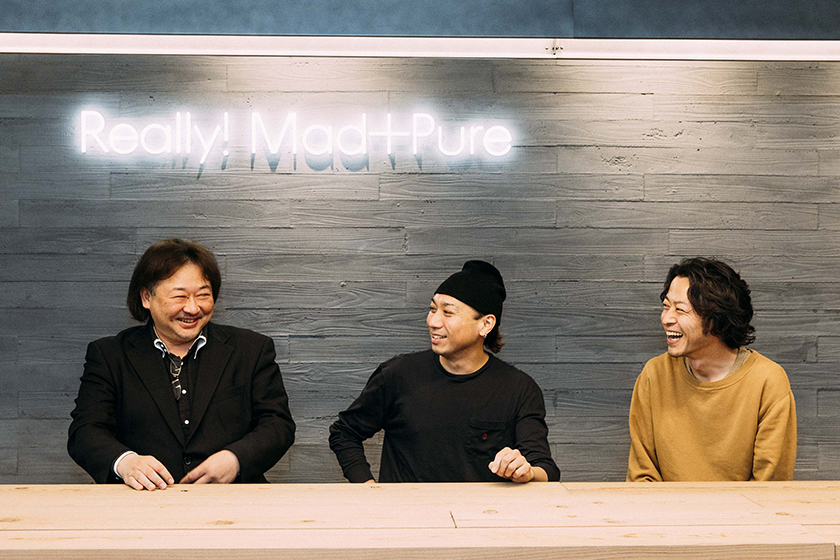
Moving forward, the approach needs to be transformed into a business model. Even as a field where its team members approach their work as if they were client agents, it appears that the field will continue to develop. “In the future, we should be improving our rapport with artists, and I think that’s where things are heading now,” says Okano.
Okano: “We’re already in an age where artists themselves can work more than enough, and I think there are plenty of artists out there who are thinking, ‘We don’t want to affiliate with a major label, but at the same time it would be nice to get the kind of support they can provide.’”
Finally, we asked about future prospects for 360-degree development with Shank.
Okano: You look around and see cases where people are working as agents without the label and management distinction. I have other acts I work with myself that are operating like this. You get the sense that the artists are the ones giving you work. Of course I think there are cases where the traditional style of affiliation matches best, but that depends on the artist.
Fukazawa: “I think it’s good that a person has different roles they can fill. This kind of small team happened to be the best fit for Shank, but it’s probably case-by-case, regardless of what genre the artist is. What does this artist demand? How do they want to be seen? How do they want to improve together? The style probably depends on these factors as well. It’s not as if there’s a formula, and in an age where indie bands are working in the manner of major label acts, it’s interesting to see a major band working like an indie one, and I think that’s exactly what this project is. Plus, they’re doing it a company that falls into the top three in Japan. That’s really quite compelling and shows that the band really has a dream.”
An indie approach by one of the top 3 major companies in Japan: that concept lends itself to both the ambitions of doing something completely opposite of the way one would think to while also serving as a business opportunity. Perhaps this kind of 360-degree enterprise and expansion could be a business model that has future potential as seen through the fruit it’s borne and it’s general appeal.
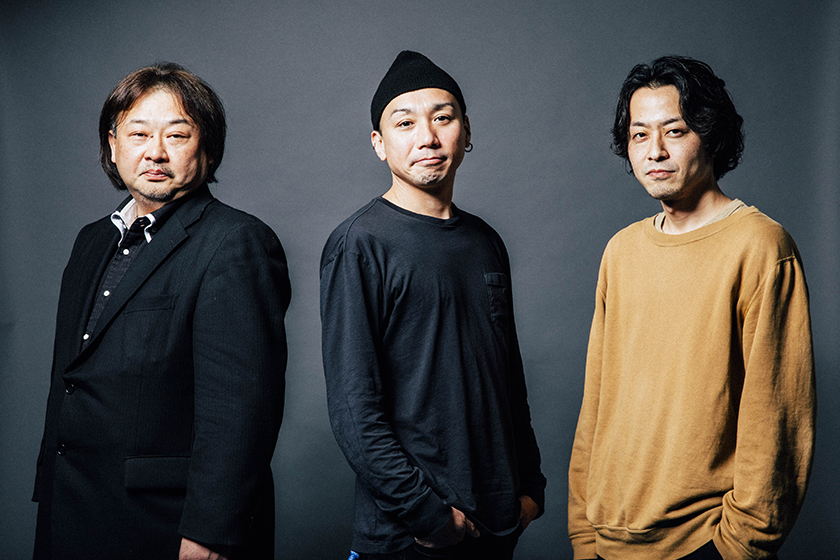
(Photo:Left)
Avex Entertainment Inc.
Kimihiko Yoshino
(Photo:Center)
Avex Entertainment Inc.
Yoshiaki Fukazawa
(Photo:Right)
Avex Entertainment Inc.
Kazuma Okano



